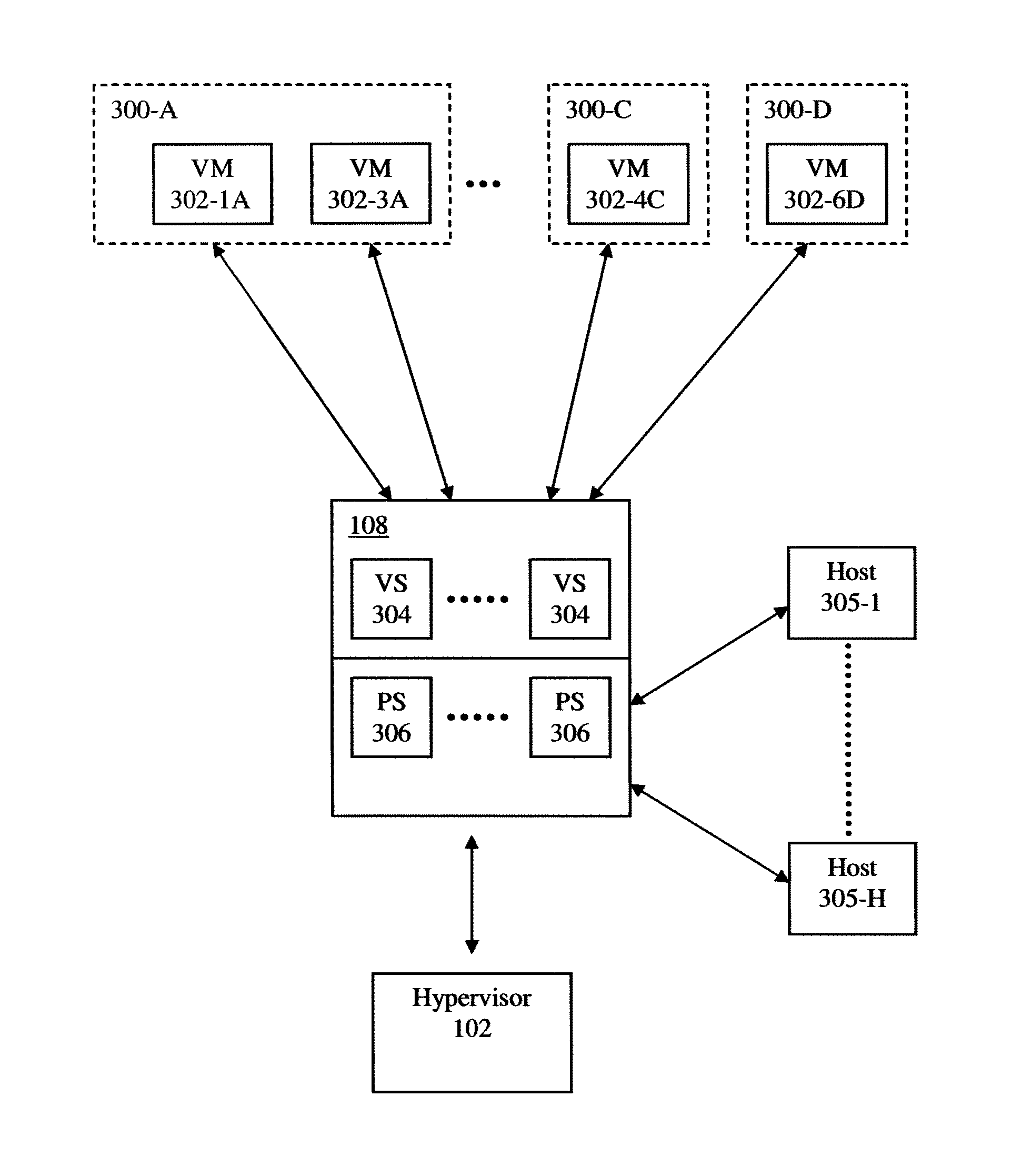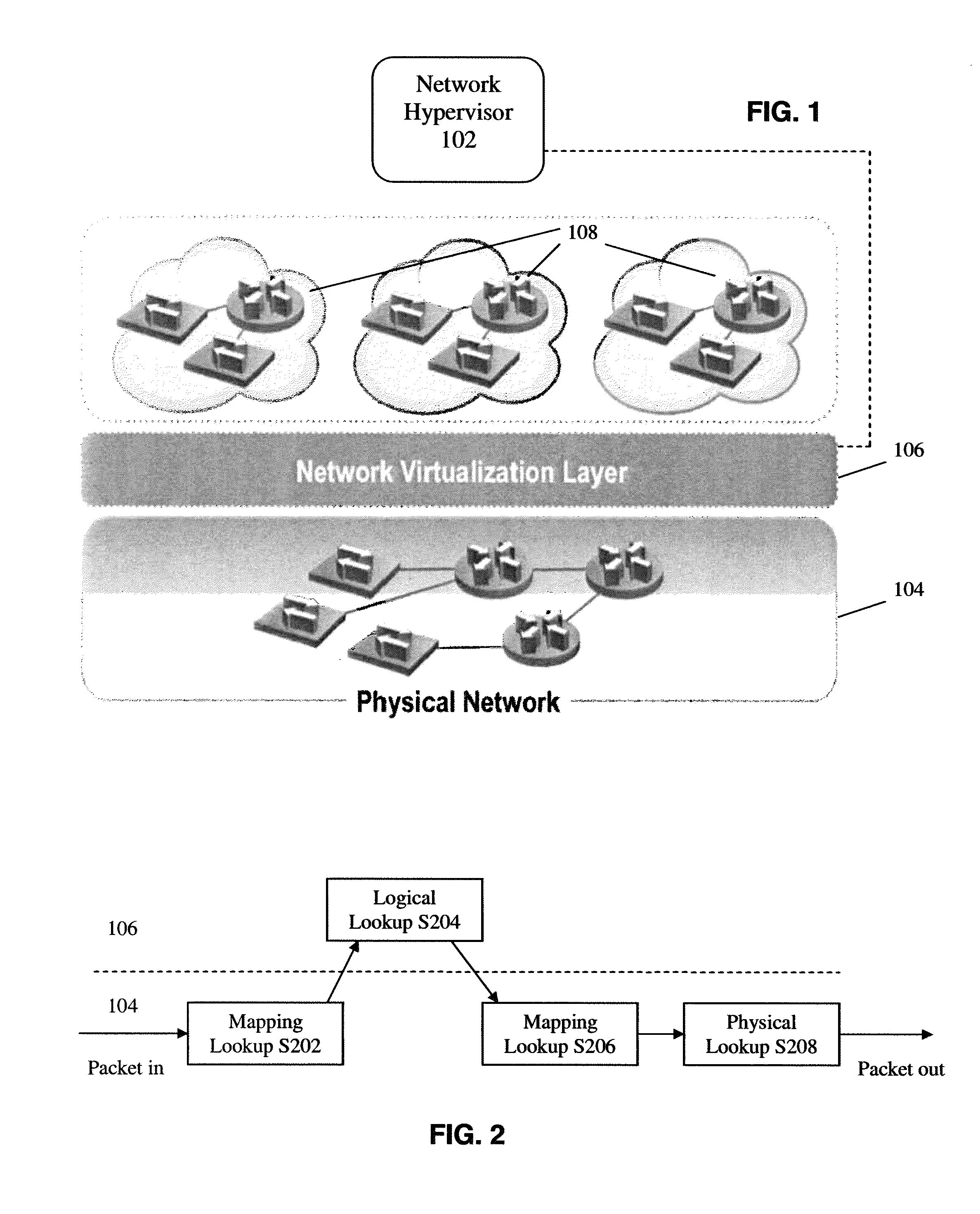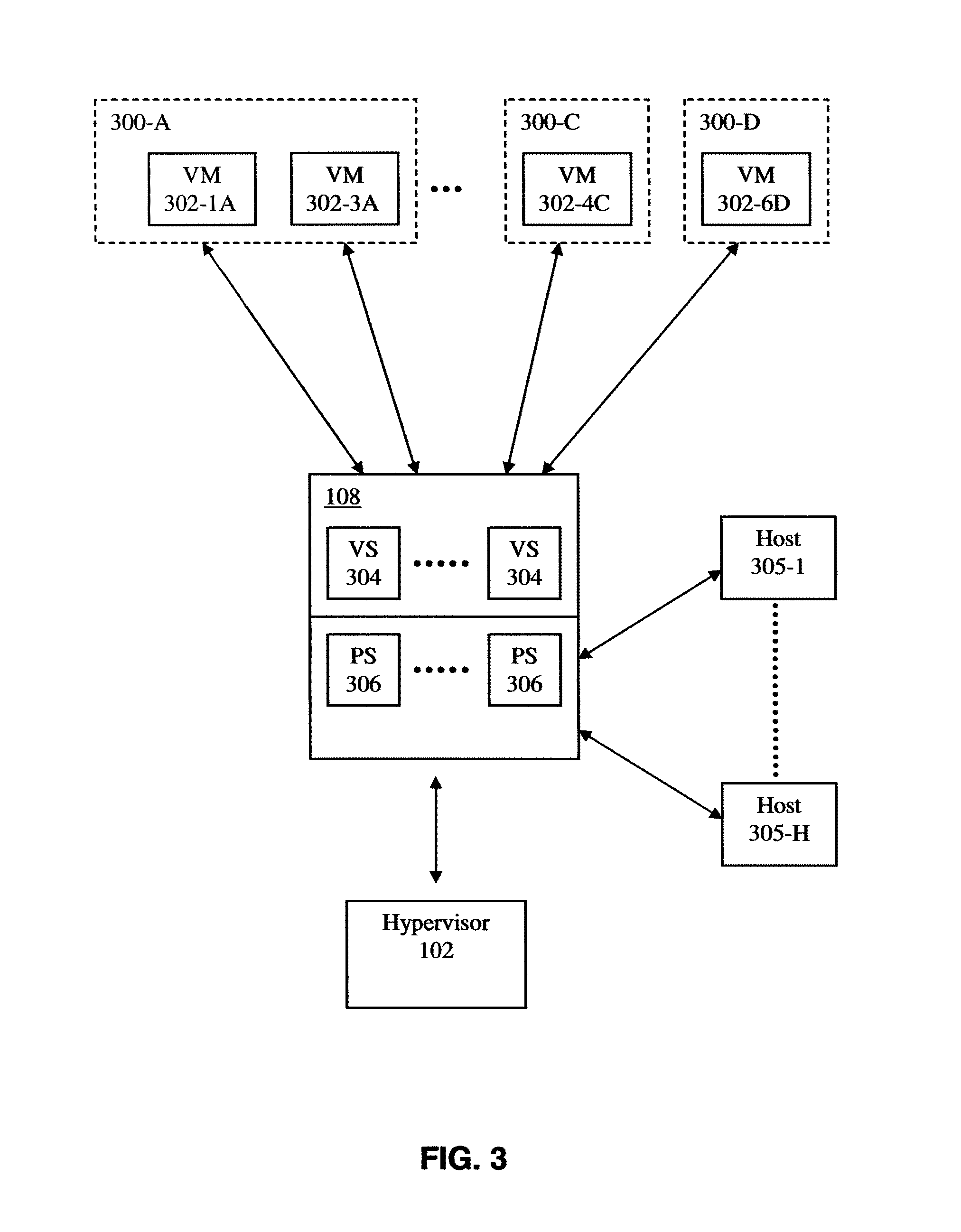Method and apparatus for implementing and managing distributed virtual switches in several hosts and physical forwarding elements
a distributed virtual switch and host technology, applied in the field of network communication, can solve the problems of l2 domains that cannot scale to large sizes, cannot solve the problem of retaining tenant isolation, and cannot solve the problem of large mobility, and achieve the effect of ensuring security, facilitating and efficiently communicating with each other
- Summary
- Abstract
- Description
- Claims
- Application Information
AI Technical Summary
Benefits of technology
Problems solved by technology
Method used
Image
Examples
example mechanisms
[0040 of hypervisor 102 used to map the abstractions in the logical interface 106 to the physical network 104 according to embodiments of the invention will now be described. For example, assume there is a separate mechanism for creating, defining, and managing what should be in the logical interface—i.e., for example, how many logical forwarding elements the interface should expose and what are their interconnections alike.
[0041]If one assumes the used physical switches all provide all the primitives discussed above, the hypervisor 102 has two challenges to meet while mapping the logical interface abstractions to the physical hardware:[0042]Potentially limited switching capacity of individual physical forwarding elements, as well as the limited number and capacity of the ports.[0043]Potentially limited capacity of the TCAM tables of individual physical forwarding elements.
[0044]In the context of the data centers, the task of the network hypervisors is simplified since the network t...
PUM
 Login to View More
Login to View More Abstract
Description
Claims
Application Information
 Login to View More
Login to View More - R&D
- Intellectual Property
- Life Sciences
- Materials
- Tech Scout
- Unparalleled Data Quality
- Higher Quality Content
- 60% Fewer Hallucinations
Browse by: Latest US Patents, China's latest patents, Technical Efficacy Thesaurus, Application Domain, Technology Topic, Popular Technical Reports.
© 2025 PatSnap. All rights reserved.Legal|Privacy policy|Modern Slavery Act Transparency Statement|Sitemap|About US| Contact US: help@patsnap.com



